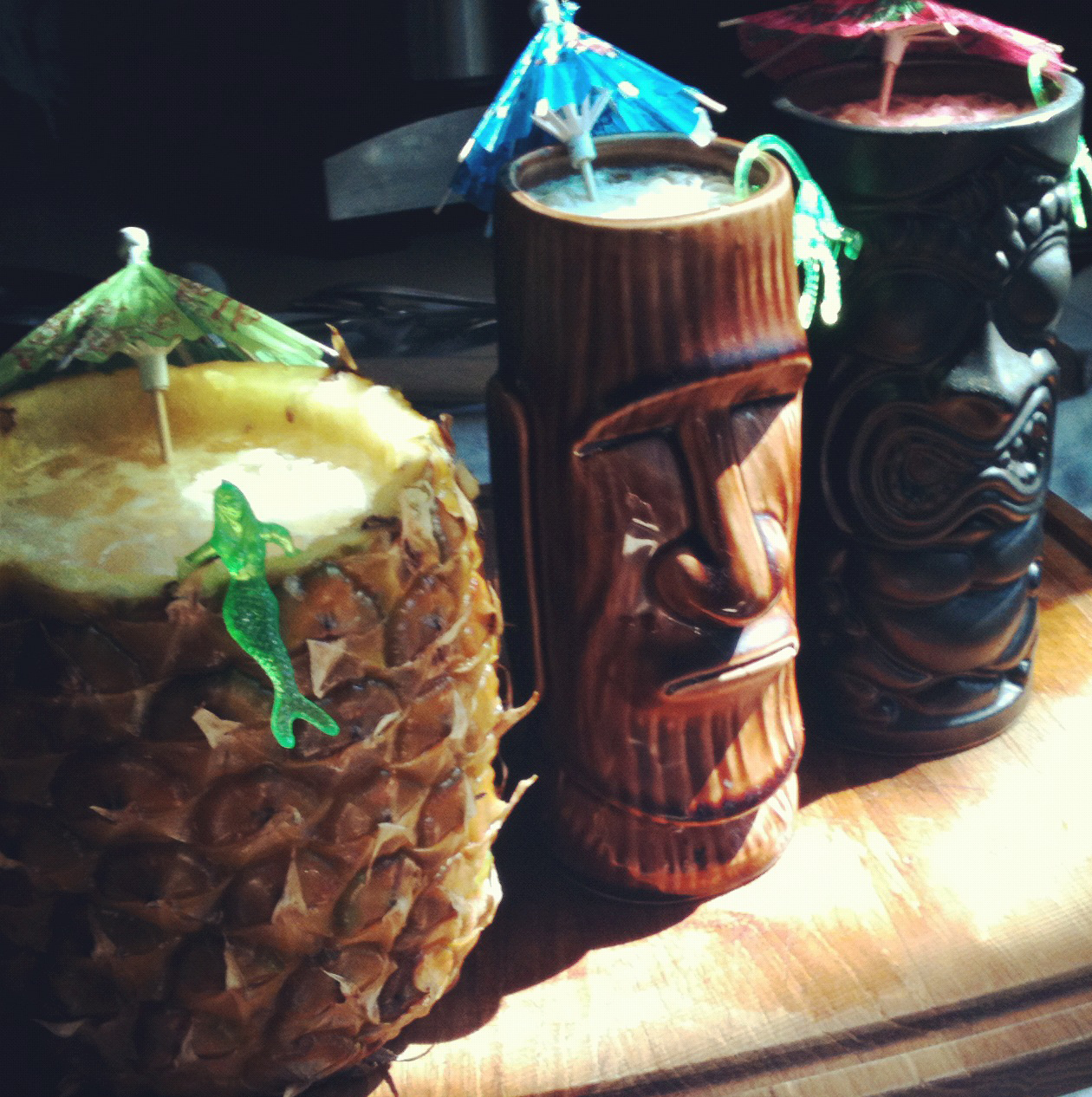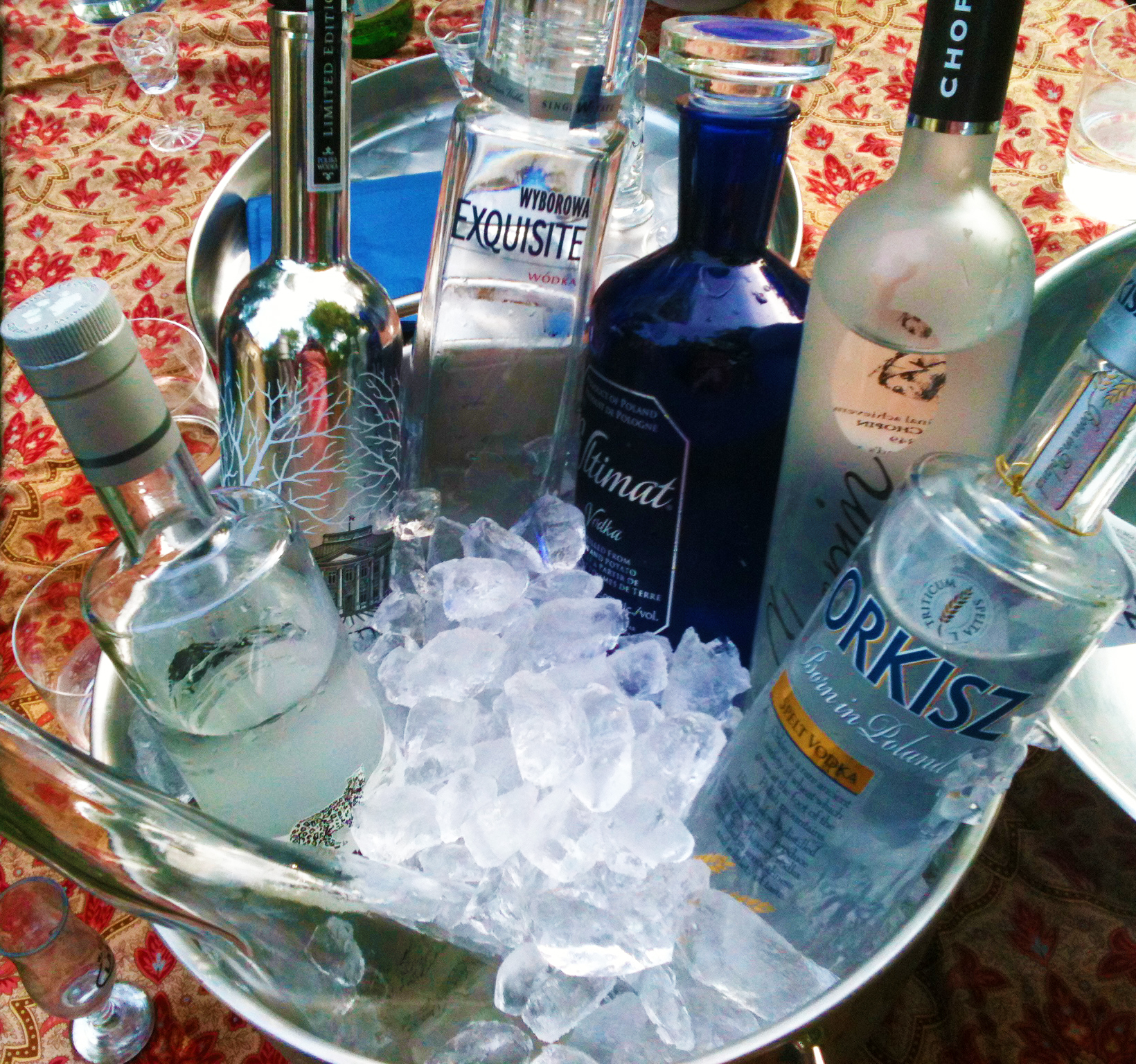
Maybe you’ve rented a house, you’re looking to shore up your drinking options and make the most of your dollars (or euros, or pesos, or lempiras) in the booze department. Perhaps you’re just curious about the most mixable of vacation potables. In either case the D&C Club has got your back.
That being said, caveat urinator, your true and only Yoda should be your own personal tastes, but for the sake of argument, let’s say we were seperated at birth and that the pirate blood of our ancestors runs hot through our veins. Or something like that, I don’t have pirate ancestors that I know of, but I am listening to Don Henley’s Boys of Summer right now, that has to count for something.
When it comes to drinking, it’s not just about the liquor, it’s about the complete experience, it’s about how the liquor fits into the place where and when you drink it. Rum tastes better in the Caribbean, scotch tastes better in Scotland. You can argue against this if you want, but deep down you know it’s true, things fit, they resonate, they become more than what they are in the right time and place.
Therefore, once in southern climes, should we find ourselves in the solomonic dilemma of having to choose, for reasons of space in the golf cart or cash in our pockets, this is the order the bottles would go into the shopping basket.
1.Rum

Yo ho ho indeed. The very creation of rum is profoundly intertwined with the brutal history and early economy of the Caribbean. Originally a bit of an afterthought, rum is made with molasses, the byproduct of making sugar from sugarcane. It’s Mister Columbus that introduces said plant to the area during his second trip in 1493, and we first hear about rum in the 17th century, kudos Barbados, kudos. So laborious is the exploitation of those plantations, that they really did not take off big time, or at least the profit margins weren’t all that interesting, until the labour force became cheaper, much much cheaper, as in slaves. Yeah, that sucks.
There’s really a ton of stuff to say about rum and it will one day get it’s own post (how about rum reviews, interested? Let me know). Pirates, taxes, American independence, competition with other spirits, navy daily, eventual loss of prestige, the story of rum could be read like the rise and fall of ruman Roman empire. Not only is rum the spirit par excellence of the islands, you can smell coconut and pineapple hidden among the other notes, it is also an eminently mixable elixir. It’s sweetness makes it extremely flexible and you can combine it with almost anything to make a worthwhile drink. Recipes will come in the specific rum post (now more and more becoming a necessity I see) but from daiquiris to zombies, or sampled almost neat, you can’t go wrong with rum.

Roughly speaking there are two styles or species of rum, and each comes in different cask treatments and age statements. The original rum is the aforementioned molasses based spirit. Basically you make sugar from sugarcane, you get a waste product that is fermented and distilled into rum. Boom, the world economy is affected.
The other kind of rum, exclusively from the French Antilles, is rhum agricole, simply meaning agricultural rum. It’s a newcomer to the family, appearing in the mid 1800’s, and its birth is prompted by political , scientific and economic changes in Europe, I’m not kidding, and it’s a fascinating story (now I really have to write that rum post). Basically for a bunch of reasons, including the vision of one Napoleon Bonaparte (who wasn’t actually short by the day’s standards, that was just English propaganda), in France sugar from beets comes to dominate the market, and growers from the Antilles have to find another use for their sugarcane. So to save on the production costs of rum (I assume) and to do something with their sugarcane, instead of making sugar from the juice of the pressed sugarcane they make rum right away. There might be trouble brewing on the world stage, but people still want to get weird. Rum agricole has a very different set of flavours, much more grassy and greenish, not as sweet, it mixes very very differently, but is very drinkable.
Both rum families come in different colours.
White rums, essentially that is rum straight from the still, it has zero barrel time, but may have aged a little in stainless vats. Wood from casks is what imparts colour (when there’s no colorant added) and a certain flavour to spirits, white spirits tend to be a bit more neutral, sometimes “rougher” and reflect only the material they come from. Several cocktails call for white rum, I like to substitute amber or aged rums. Try it out, see what you like.
Dark or amber rums, they are a universe unto themselves, some come with age statements, which let’s you know how long exactly rum has spent in a cask and some don’t, which always makes me fear caramel was added to briefly casked rum, but that’s just a guess, I’ll have to look into it. Darker rums have more sweetness and depth to them and different islands produces different tastes. There really is a world to explore, distillation speed also counts,. Stay tuned for more.
2. A different rum. Really, you can’t lose
3.Tequila

Tequila is a much maligned and misunderstood spirit, frequently and unfortunately associated with realy cheap body shots done off strangers, spring break, dancing on speakers and blackouts. I’ve met more people swearing they will never again drink tequila than all the other spirits combined. I say don’t blame the tequila, blame the cheap ass quality and the inordinate amount you drank. This noble hooch has however reclaimed most of its dignity. Tequila ranks among our very favourite drinks, it has an identity and a taste all it’s own and the good ones (as in all spirits it’s always and only about the good ones, life is too short for anything else) might surprise you with hints of black pepper, pear and vanilla along with freshly mowed lawn notes. If you are to go through life knowing only two things about tequila, it would be to avoid gold tequila like the fucking plague and only buy bottles that state on the label that they are made from 100% Agave. That’s actually pretty solid advice.
Tequila, like it’s cousin mezcal (the worm in the bottle is not a thing, I’m guessing it’s a one time accident that became an urban legend that became a gimmick, eating the worm does nothing, worm in mezcal = cheap mezcal, don’t be a gringo) is made from agave plants. There are several varieties of agave, but tequila is only made with blue agave and it has to come from the state of Jalisco (where there is a town called not Malice but Tequila btw). For tequila to legally bear that name, not only does it have to be from Jalisco, it also has to be made with at least 51% of blue agave. When there is no mention of 100% agave on the label you can assume that it’s only 51%, and you can also assume there’s a foul tasting liquid demon headache trapped inside. That stuff is cheap, gnarly and to be avoided, which brings me to gold tequila.
Gold tequila, unfortunately the spirit’s best seller, is shitty tequila with colorant added and it preys on our misconception that coloured liquids are fancier or better. The scotch industry uses that as well with their frequent addition of caramel colorant to whiskeys. I’ve heard rumours of gold tequila that was properly made but I’ve never encountered it. Stay way, far far away. If it’s the only thing they have in a bar, have a beer, odds are good their other stuff will be crap too.
Tequila comes in four categories.
Blanco or plata (silver): basically unaged tequila, it’s the strongest in terms of raw taste, it is a very good mixer, but in some cases also make a great sipping drink. Some of them, I don’t want to plug anyone but Ixà, are surprisingly nice.
Reposado: tequila that has two month of aging in the cask (oak, I think it’s always oak), my favourite grade for mixing, it has the greenish strength of plata tequila, but with more varied aromas coming to the fore. Makes the perfect margarita.
Añejo (aged): more than one year in a small cask, the liquid has turned amber and the wood is now a significant actor in the taste profile. Rich and sweet, it completely changes the taste of cocktails. usually less for mixing and more for sipping. It deserves your attention.
Extra añejo: same as above but three years or more in a small cask (which makes the alcohol mature quicker than in large casks). I don’t think I’ve ever had some, so I can only assume that the anejo character is even more pronounced, so most likely for sipping only.
Some tequilas however have become rather pricy, I’m not sure if it’s because of the production issues (plant illnesses) of the last decades or because demand has been growing. I originally started turning away from scotch because I thought the price point was getting less and less interesting. I’m curious to see what will happen with tequila.
3. On par: gin or vodka
If we are travelling in a large pack, odds are we will buy one, or both of these. Both are neutral spirits, but gin is further flavoured with botanicals, most notably of course juniper berries. Our crew seems to have a need to fight off malaria with gin and tonics or enjoy a bloody caesar in the afternoon. Both are also quite mixable alcohols and will serve you in good stead when you run out of rum and tequila.
Because neither is typically aged (in my book cask aged vodka essentially becomes whiskey), some of the prices asked today for artisanal gins or premium-premium vodkas are a bit surprising. I get it, you store a cask of rum for 20 years, these are costs you need to cover, but for booze straight from a still? Meh. I’m all for buying quality hooch but I don’t like being taken for a ride.
As for premium-premium vodka, after actual tests, I just can’t tell the difference. I’m not comparing it to rotgut obviously, and maybe my palate is subtle like an aircraft carrier, but between a 35 and 100$ bottle? All the same to me. However I’m more than willing to reconsider should I run into you and you feel strongly about the topic.
Also please keep it in the freezer.

What, no scoth, no bourbon, no rye? Apart from a whiskey sour I really can’t think of a whiskey based drink I would like to have on a dock as the sun goes down amid the waves. To me manhattans and rusty nails belong in front of a fireplace in the winter time. Maybe it’s my overly sensitive nature, but whiskey seems alien to the beach, the palm trees and salt spray drinkskutlur of the islands. Just my opinion of course. Feel free to let me know otherwise.
As always drink well and wisely, you want to be in top shape for your dives the next morning (don’t skimp on the water), and you want to remember every detail of that threesome for when you’re in the old folks home.
